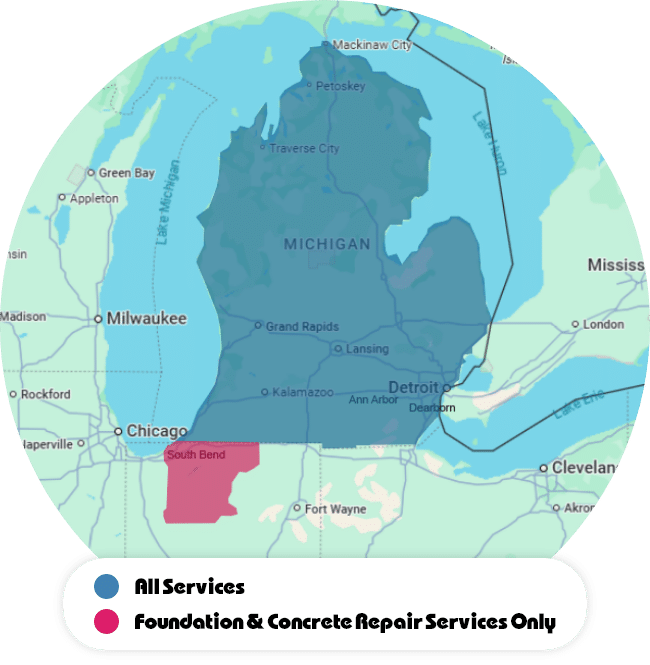The Spring Thaw and Your Concrete

We’ve already discussed what the freeze and thaw frost heave cycles of winter can do to your home’s foundation; today let’s talk about your concrete.
The concrete surrounding your home - that is, your sidewalks and driveway - can be as affected by frost heave as your foundation, but the signs are different. Here’s what to look for.
Sinking
When the soil under your concrete gets oversaturated, it can wash away and leave a void. This leaves the concrete unsupported and can lead it to sink - sometimes the whole slab, and sometimes just one side. You’ll notice a sudden ledge where one of the slabs has sunk. This is a trip hazard and causes annoying puddles during storms. It also makes raking leaves and shoveling snow more difficult as you keep running into the ledge.
Cracking
Sometimes, when a void is left under just one side of a concrete slab, it doesn’t sink evenly and instead basically cracks in half. Cracks in concrete are not only unsightly, but are again a trip hazard. Depending on local ordinances, you could also be fined for the repairs or any damage caused by the broken slabs. Cracks also let water in, which can wash away more soil and lead to further damage.
Gaps
In sidewalks, builders manually put in contraction joints between slabs to minimize other cracking as the concrete cures. In driveways, there are expansion joints often filled with some sort of mixed material (generally a combination of asphalt and vegetable and mineral fillers). When these joints are compromised by the expansion, contraction, and washout of soil, they can open up, leaving noticeable gaps between slabs. These gaps are generally larger than the cracks mentioned above, which means they’re even more likely to let water in between and under slabs and wash out soil. Slabs are also at risk of crumbling at the joint separation until they’re unsalvageable.
--
So what do you do?
Traditional mudjacking fills the void under a slab with a mixture of mud and concrete. But if dirt washed away once, what stops it from doing the same thing the next time it rains? (Hint: nothing).
Our PolyLevel system instead fills the void with a waterproof, inorganic polymer that expands to fill the space and lifts the concrete slab to its original position. Once it finishes curing (which takes less than an hour), it’s completely resistant to washout and ready to bear weight, whether that’s your kid’s tricycle or your SUV.
You spend a good amount of time outside shoveling snow off of walkways and driveways in the winter. With uneven concrete, not only are you shoveling snow but anxiously waiting for the dreaded crash as your shovel hits a raised edge of a concrete slab. Now that the snow is gone, if you’ve noticed some dips and divots where there weren’t any before, it’s time to call us to schedule your free PolyLevel inspection.









